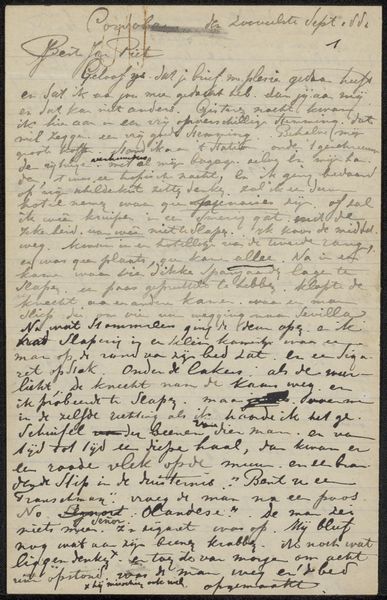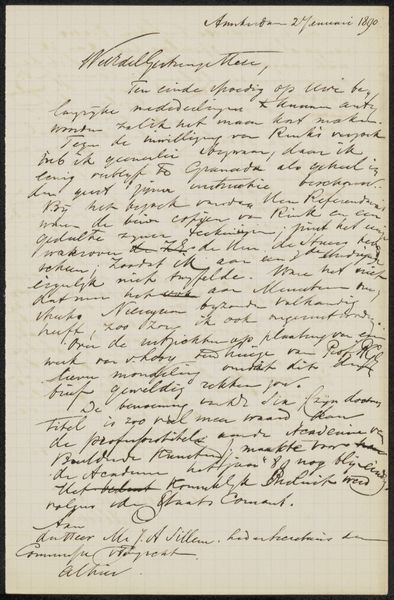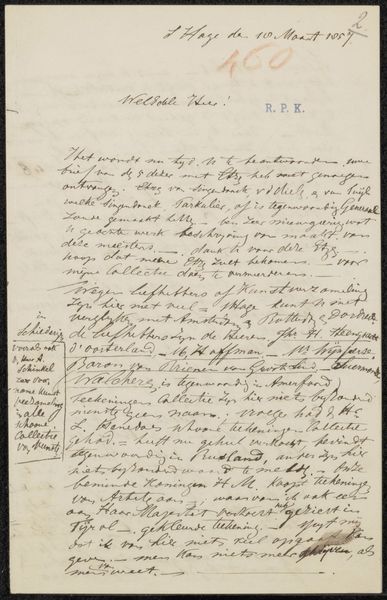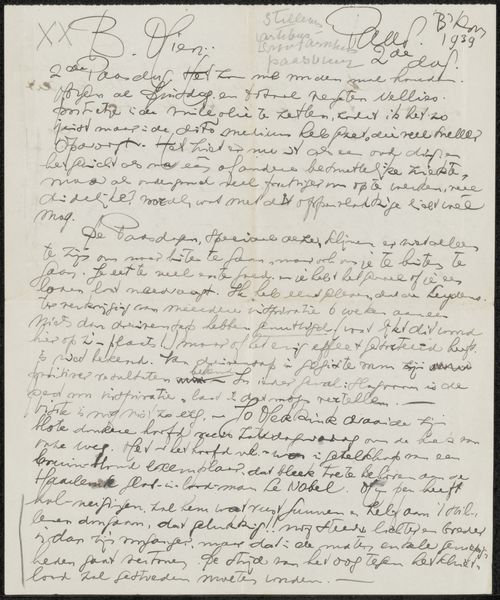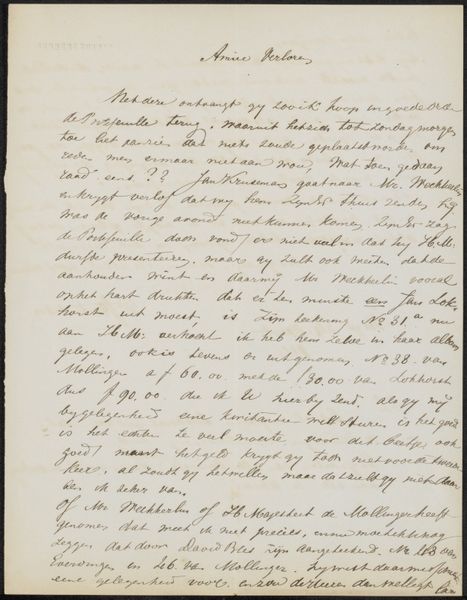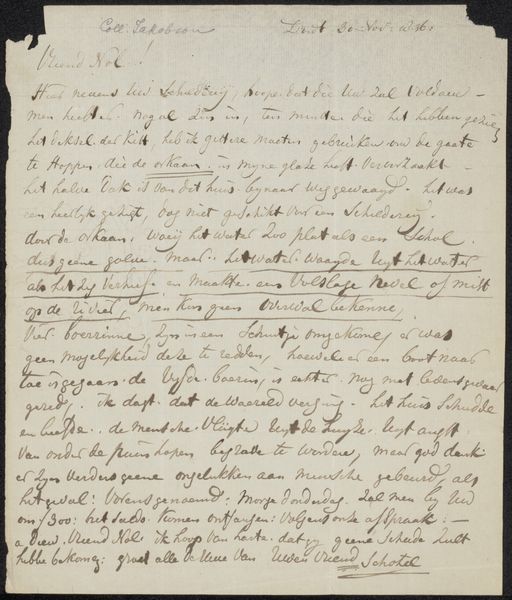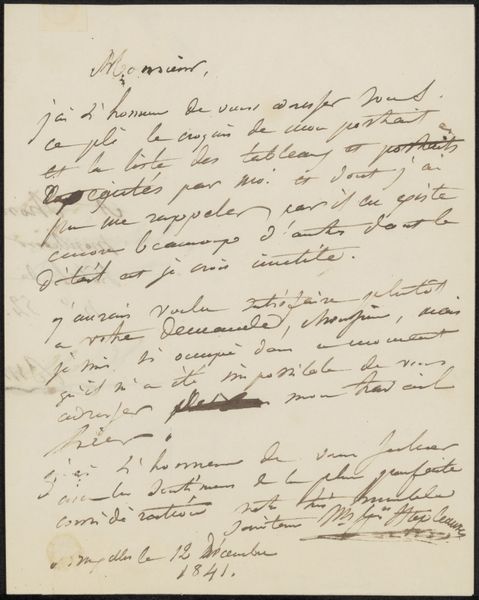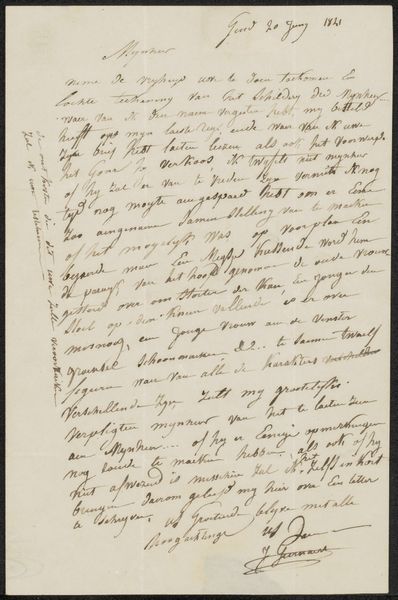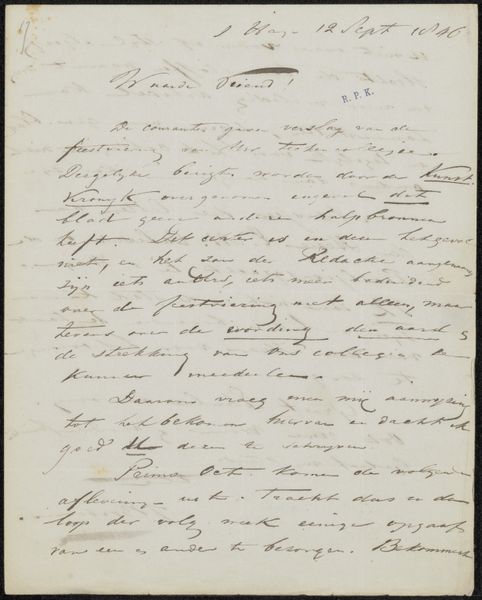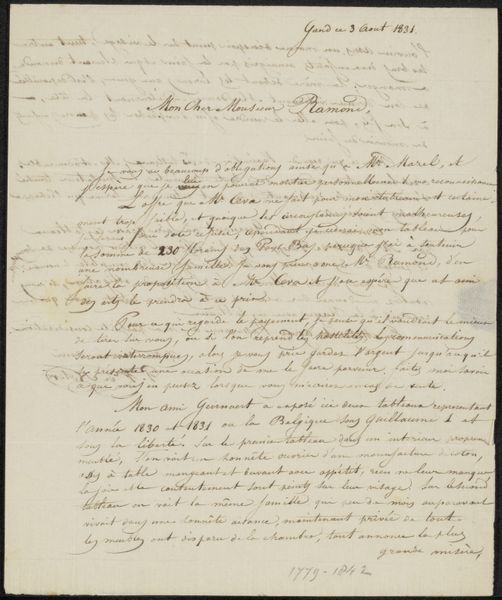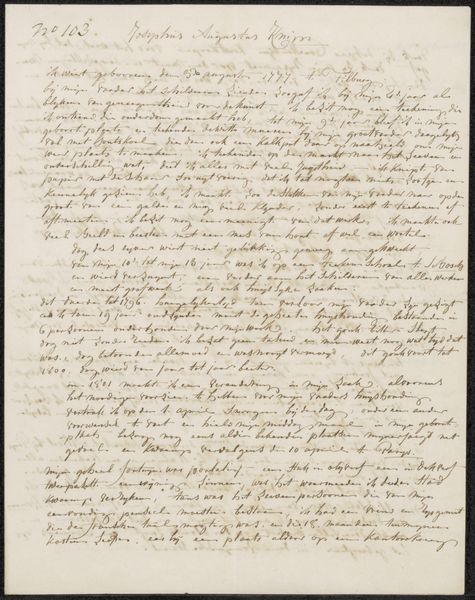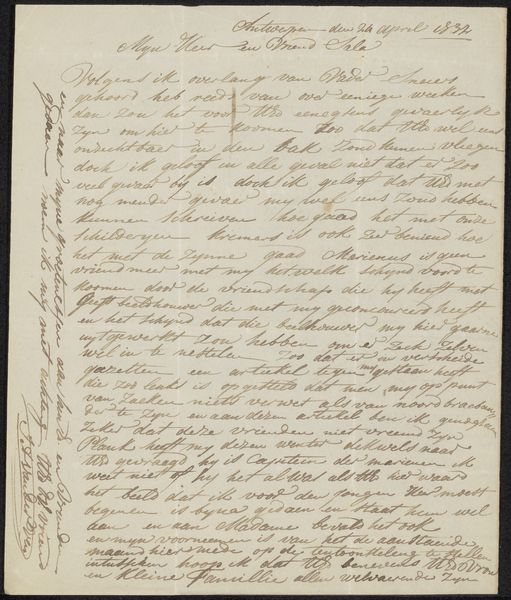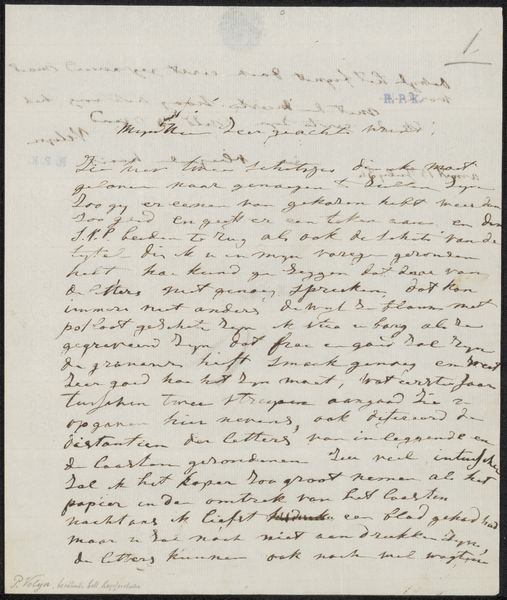
drawing, paper, ink, pen
#
portrait
#
drawing
#
pen sketch
#
paper
#
ink
#
romanticism
#
pen
Copyright: Rijks Museum: Open Domain
Curator: "Brief aan Jean Zacharie Mazel," possibly from 1830, by Jacob Joseph Eeckhout. It's an ink on paper drawing housed in the Rijksmuseum. Initially, the density of the script and its aged look evoke a sense of peering into a bygone era. What details particularly catch your eye and make you reflect on it? Editor: The handwritten nature is fascinating, of course, but as I examine the whole image it reminds me that even mundane letters, such as this, can provide a glimpse into social histories. Am I on the right track? Curator: Absolutely. Letters, especially those preserved in museum collections, offer unique access to lived experience that often gets overlooked in official historical narratives. Consider, what insights might we glean from the letter's physical context, like the type of paper used, the ink, and the very act of handwriting when printed forms were becoming more common? Editor: Well, seeing that it’s handwritten, makes me think about literacy and education at the time. Was letter writing common? Also, considering this would have been delivered through a postal service, did that require wealth or status to have it sent to its recipient? Curator: Those are insightful questions. Letters like this reveal aspects of class, education, and even political dynamics. Remember Antwerp in 1830 – it was a time of political tension, right before Belgium formally separated from the Netherlands. A seemingly personal letter could very well contain coded references or allusions relevant to these upheavals. Thinking about how such personal communications might intertwine with broader public events can radically transform our perspective. What do you make of that idea? Editor: It is true, personal and mundane things give you better insights to specific moments in the course of time. Letters in the future will show similar characteristics for historians, making me more aware about how my digital activity can show aspects of today’s society. Curator: Exactly. Analyzing an artwork like this shows us the subtle power that can be gained through social and cultural understandings.
Comments
No comments
Be the first to comment and join the conversation on the ultimate creative platform.
